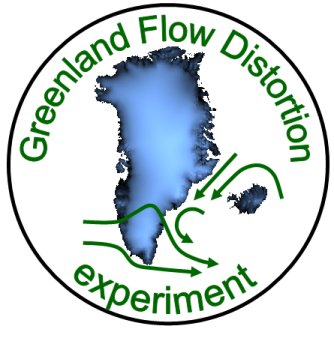Dataset Collection
Greenland Flow Distortion EXperiment (GFDex): In-situ Observations of High-impact Weather Systems and Their Associated Air-sea Fluxes in the Coastal Seas of Greenland
Abstract
The Greenland Flow Distortion EXperiment, based in Keflavik, Iceland, took place during February 2007. Its aim was to improve the understanding and ability to predict interactions between the atmospheric circulation and the topography of Greenland, both locally and downstream over Western Europe. Hitherto rare in situ observations of high-impact weather systems and their associated air-sea fluxes in the coastal seas of Greenland, were obtained and will be used to improve the numerical modelling and prediction of these weather systems, and thus improve the quality of the atmospheric forcing fields that are essential for accurate atmosphere-ocean coupling and the thermohaline circulation. These measurements will also be used to improve the numerical modelling and prediction of high-impact weather systems over Europe through the use of targeted observations upstream in sensitive areas of the flow.
This project investigates the role of Greenland in defining the structure and the predictability of both local and downstream weather systems, through a programme of aircraft-based observation and numerical modelling. The Greenland Flow Distortion Experiment (GFDex) will provide some of the first detailed in situ observations of the intense atmospheric forcing events that are thought to be important in modifying the ocean in this area (but are presently poorly understood): namely tip jets, barrier winds and mesoscale cyclones. Tip jets form at the southern tip of Greenland, at Cape Farewell, through the forcing of flow over and around the topography. Barrier winds occur when the large-scale flow is piled up against the southeast coast of Greenland, forcing winds parallel to the coast. While located off this southeast coast is an area of frequent mesoscale cyclogenesis. GFDex will also investigate Greenlands role in atmospheric flow predictability by carrying out upstream observations that are targeted at investigating the sensitivity of the downstream flow to the details of the upstream flow and at improving subsequent forecasts over Europe. Greenlands flow distortion can trigger large-scale atmospheric Rossby waves which influence weather systems thousands of kilometres away and several days later. These waves are by nature predictable, so by adapting our observing strategy to target specific areas, improvements in subsequent forecasts over the United Kingdom are possible.
Numerical modelling experiments after the field campaign will be used to assess any improvements from the additional targeted observations. While further numerical modelling studies of the high impact local weather systems will be evaluated and refined using the aircraft-based observations. This will increase our understanding of these systems and, through comparisons with other observations and data sets, provide accurate fields of air-sea heat and moisture fluxes for driving ocean and climate models.
Details
Related Documents
| Greenland Flow Distortion experiment |
| FAAM Flight Data File Names |
| FAAM website |
Temporal Range
2007-02-17T00:00:00
2007-03-12T00:00:00
Geographic Extent
84.0000° |
||
-74.0000° |
-11.0000° |
|
59.0000° |

